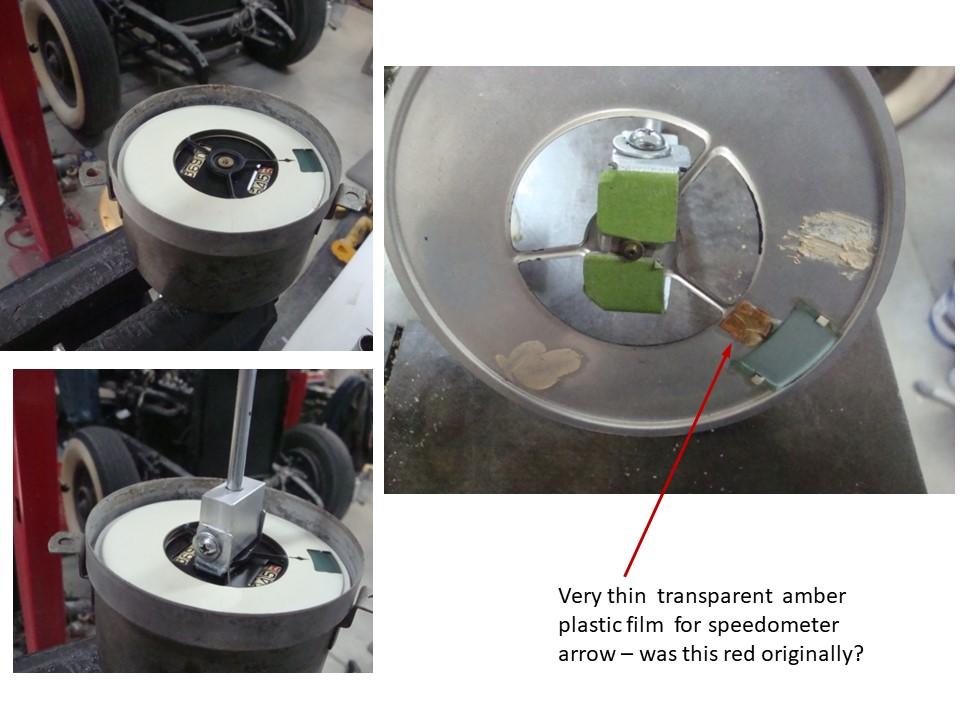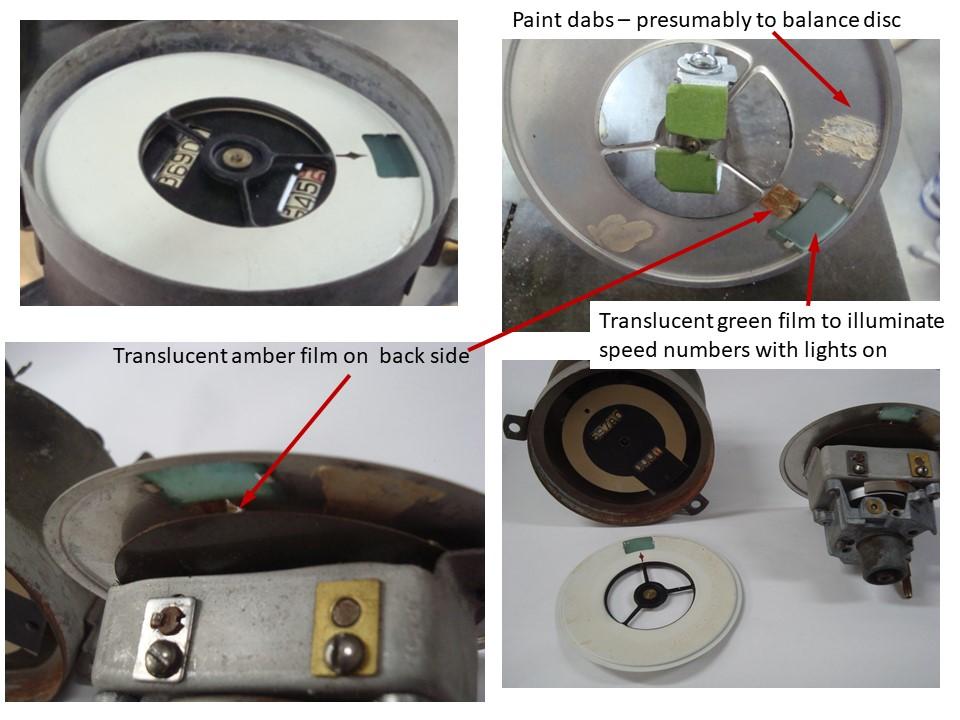- Home
- About Us
- Join/Renew
- Member Benefits
- Member Pages
- Log In
- Help
- Museum Store
I had to pull the white rotating disc out of my ’35 speedometer because it had a slight drag. The reason turned out to be the very thin transparent plastic glued to the back to illuminate the speedometer speed indicating arrow had partially come unglued and was dragging. The light passes through this plastic and the hole in the disc. I am wondering if this plastic was originally red, not amber but has aged? 
I have a recollection reading somewhere about ’35’s that the arrow would be amber up to a speed of maybe 55 and above that turn red for danger. I don’t see that happening here though, and I haven’t found anything in the PASB’s, Arrows or owners manual where I would have read that. Probably just more senility.
Pullers are always dramatic. Pulling brake drums usually involves scary amounts of load followed by a rifle crack leaving one to check all his limbs. Pulling instrument hands is hoping you don’t here the tiny little “tink” meaning you broke the delicate shaft. Luckily this puller worked – but fortunately I have a rough speedometer to practice on. The actual force is applied through a tiny .025″ diameter 3/8″ long bit of piano wire.
Ours was black…….you can call John Wolf, the number one guage restorer in the country. Our 35 V-12 had restored gauges, and it was a white plastic piece with a black arrow on top.
Ed thanks for responding, but I have 3 original ’35 original speedometers and 2 out of 3 had this amber colored translucent film cracked but still attached to the back. One was the original on my car and I don’t believe had been touched. On the 3rd the film was completely gone. There is nothing on the front side of any of my white discs. The arrow is a hole cut in the white disc and the indirect lighting from bulbs in back would illuminate the arrow from behind, and the larger green rectangle illuminates the speed numbers through the translucent front glass facia (not shown).
My question was probably a bit pointless, whether the original color was actually red but like the red KS fluid used in the fuel and temp gauges had turned to amber with age. It seems like red is a more obvious color -easier to see and matches the red arrow in the Pierce logo on the glass facia and the KS fluid. 85 years on there is probably no way to tell as all of them would have aged, unless there is some blurb in original literature describing the speedometer. I think ’35 was the only year to use this style? The arrow cutout is pretty small, and being translucent in the first place it is probably a bit hard to see in daylight, and it wouldn’t surprise me if some gauges had a black arrow put on top of the hole at some point to be able to see more clearly. Or maybe Pierce changed it late in the model year because of complaints. Right or wrong I redid mine with a translucent red film on the back. When reassembled I have to look pretty close to tell that it is actually red and not black in daylight without the backlighting.
The design is pretty interesting to me. All of my discs have rough splotches of beige paint in different spots on the back. I believe they were to add counterweight balance the disc. to Except for the paint blobs and translucent films the back side is natural aluminum and the fixed disc underneath was white. There are only very small cracks around the periphery to let the light get under the rotating disc, so reflective back and white is to help bounce the light into the into the narrow space to light up these small translucent bits. All the plastic windows for the indirect lighting on my other gauges are green.
to Except for the paint blobs and translucent films the back side is natural aluminum and the fixed disc underneath was white. There are only very small cracks around the periphery to let the light get under the rotating disc, so reflective back and white is to help bounce the light into the into the narrow space to light up these small translucent bits. All the plastic windows for the indirect lighting on my other gauges are green.
Jim
